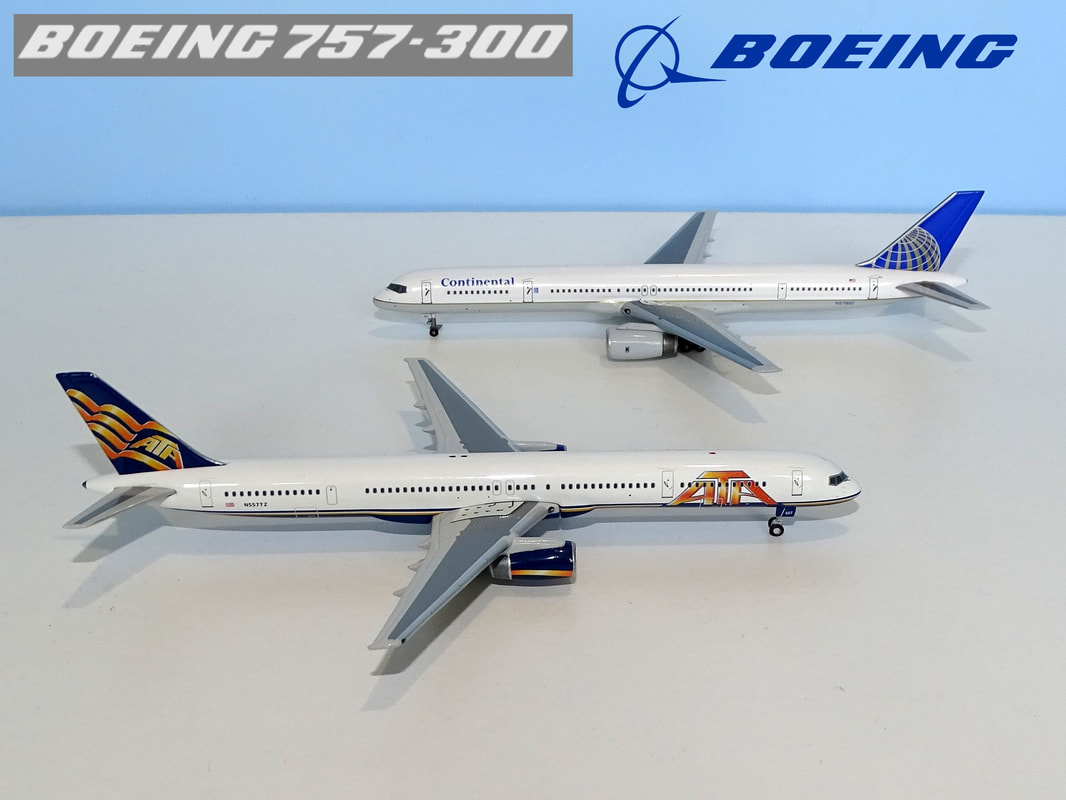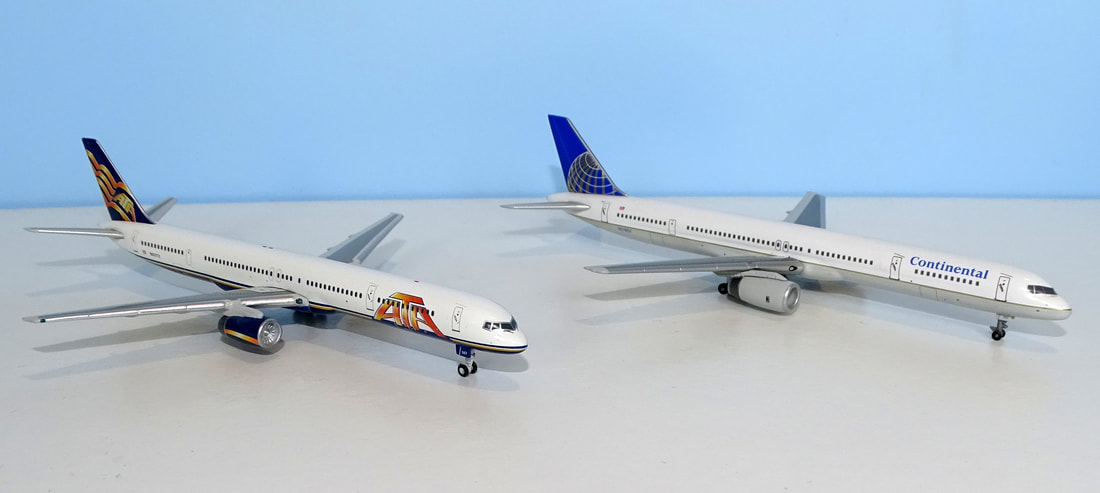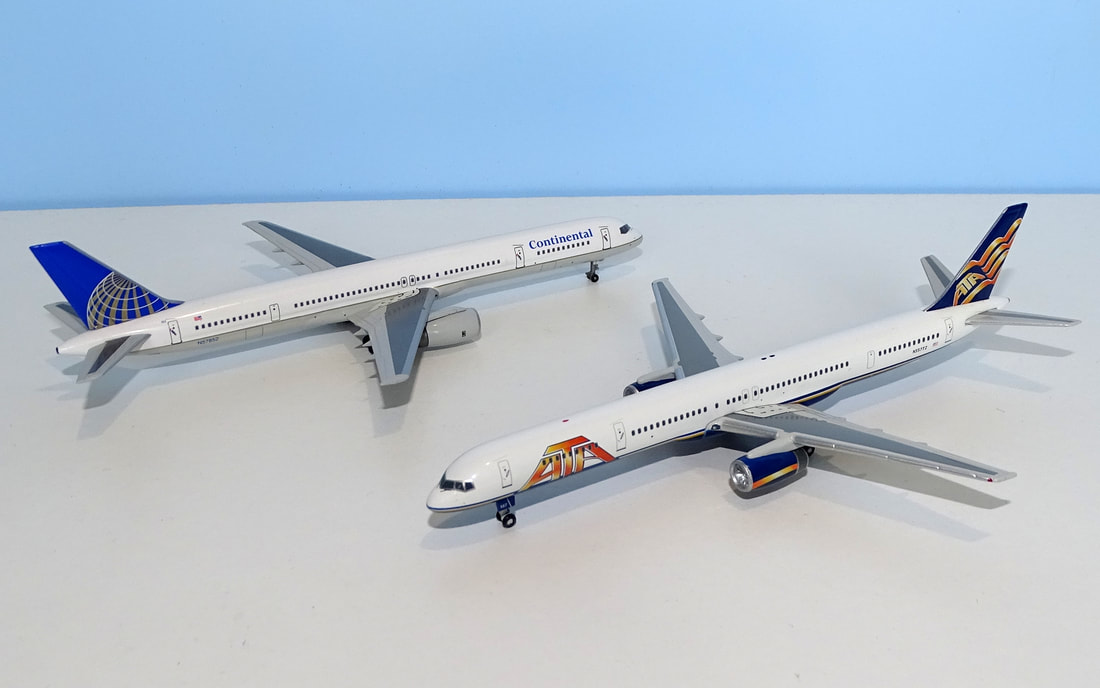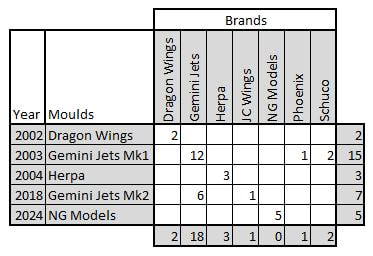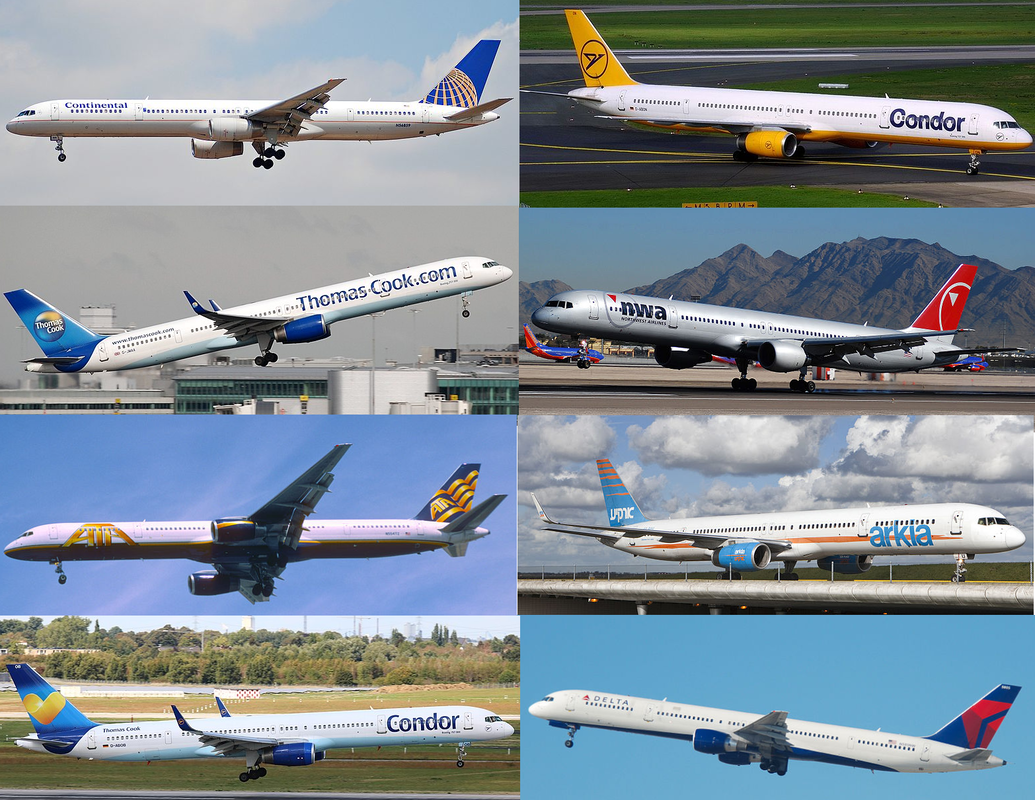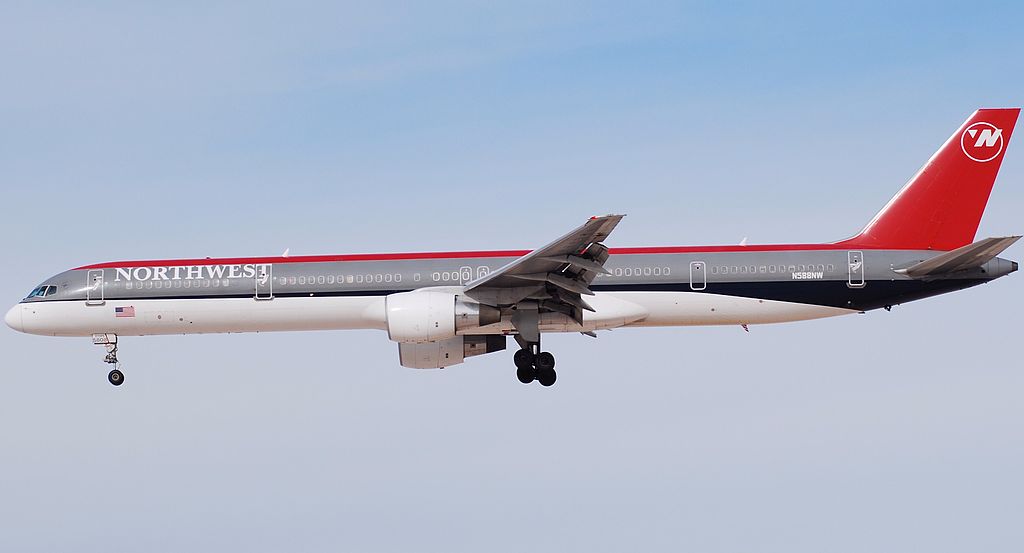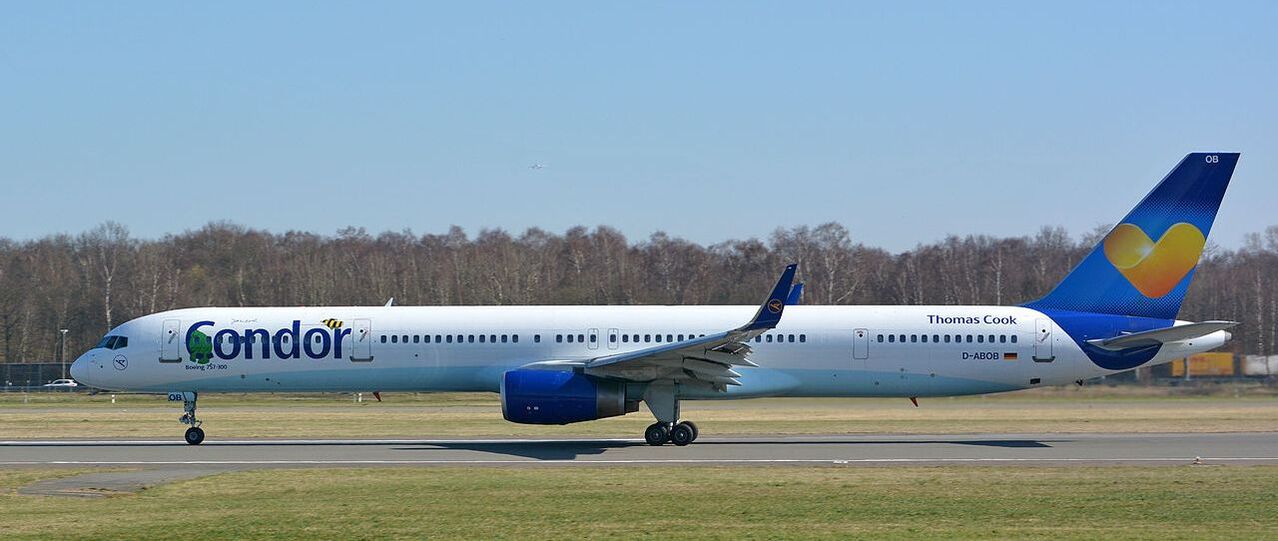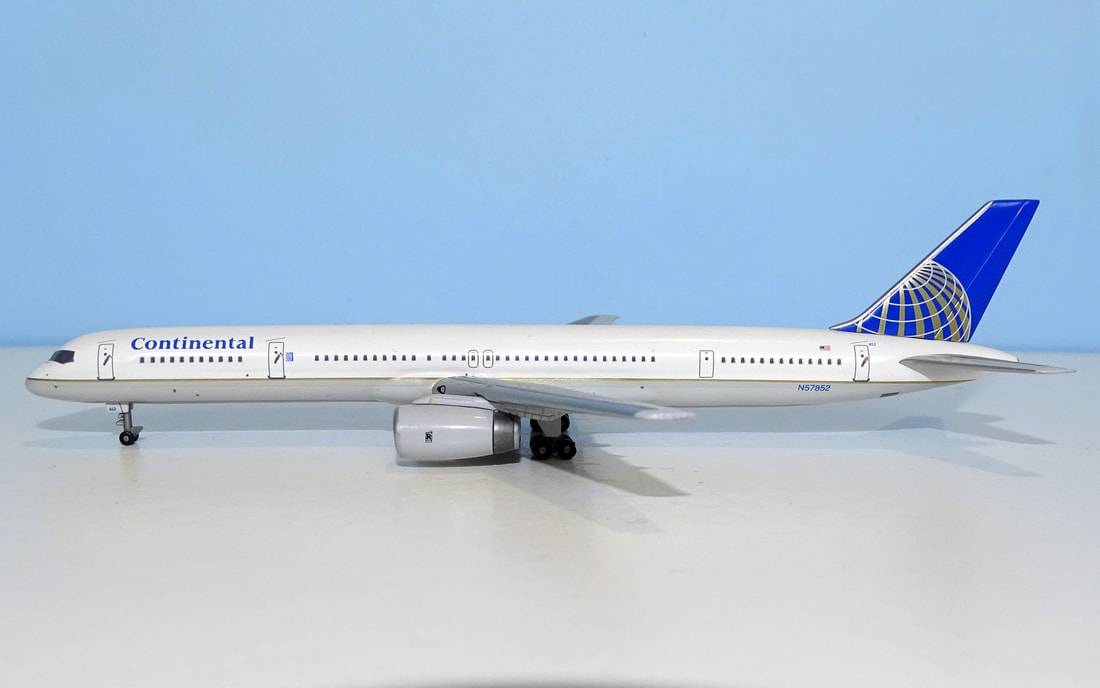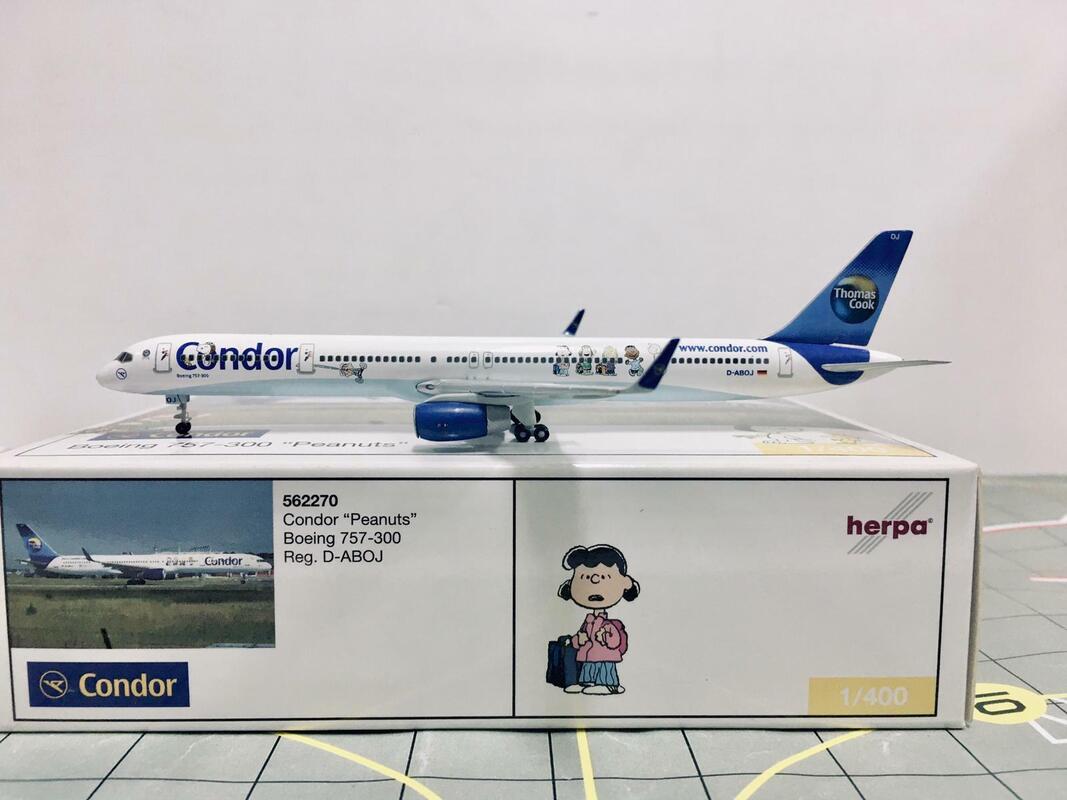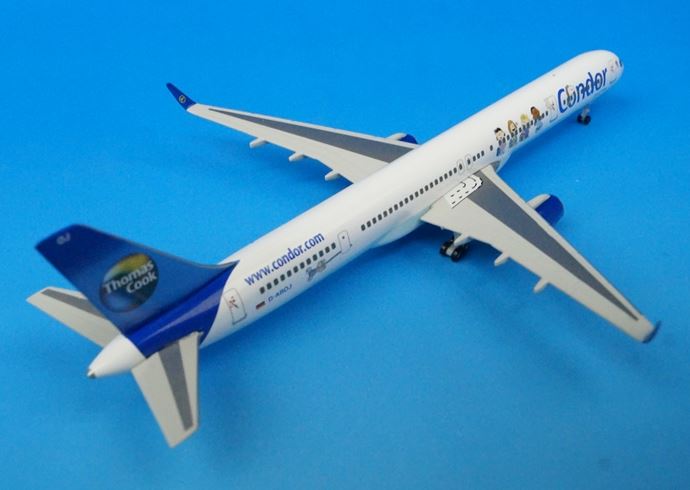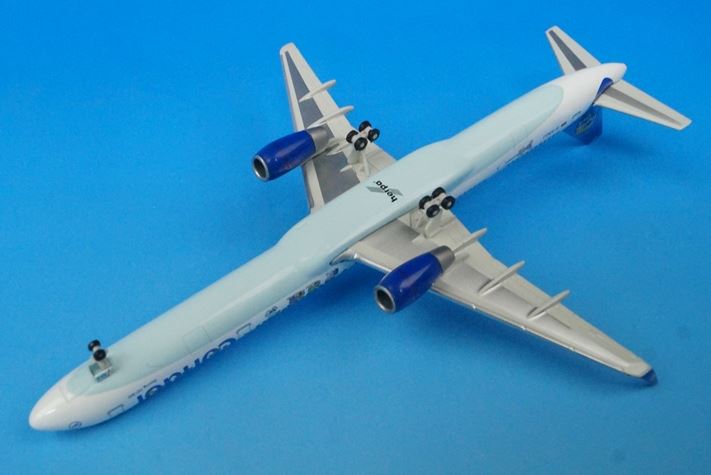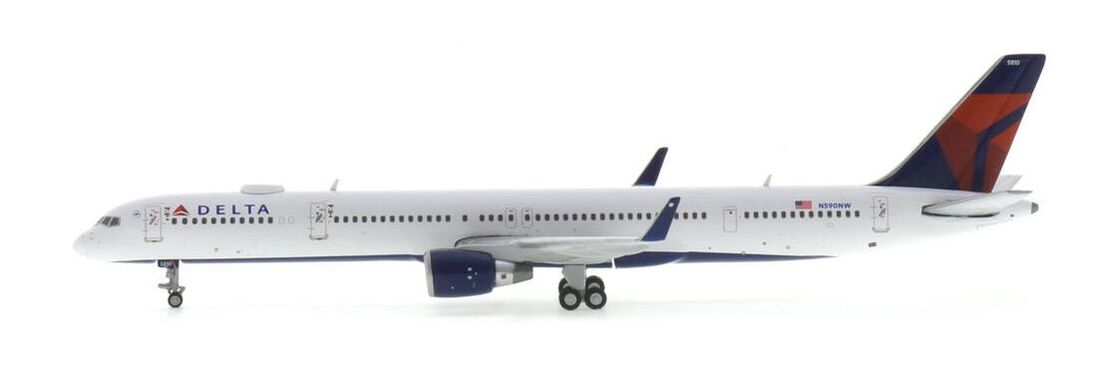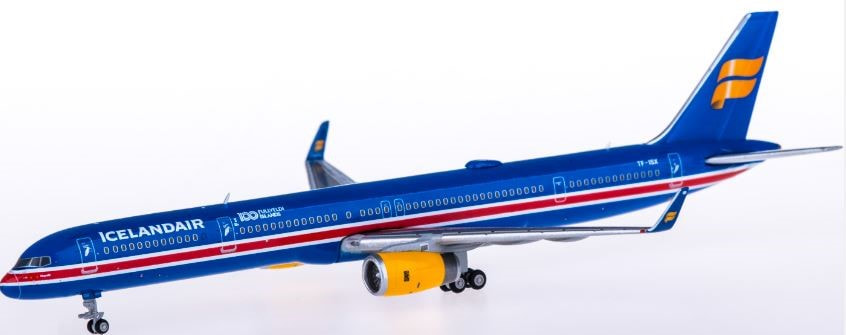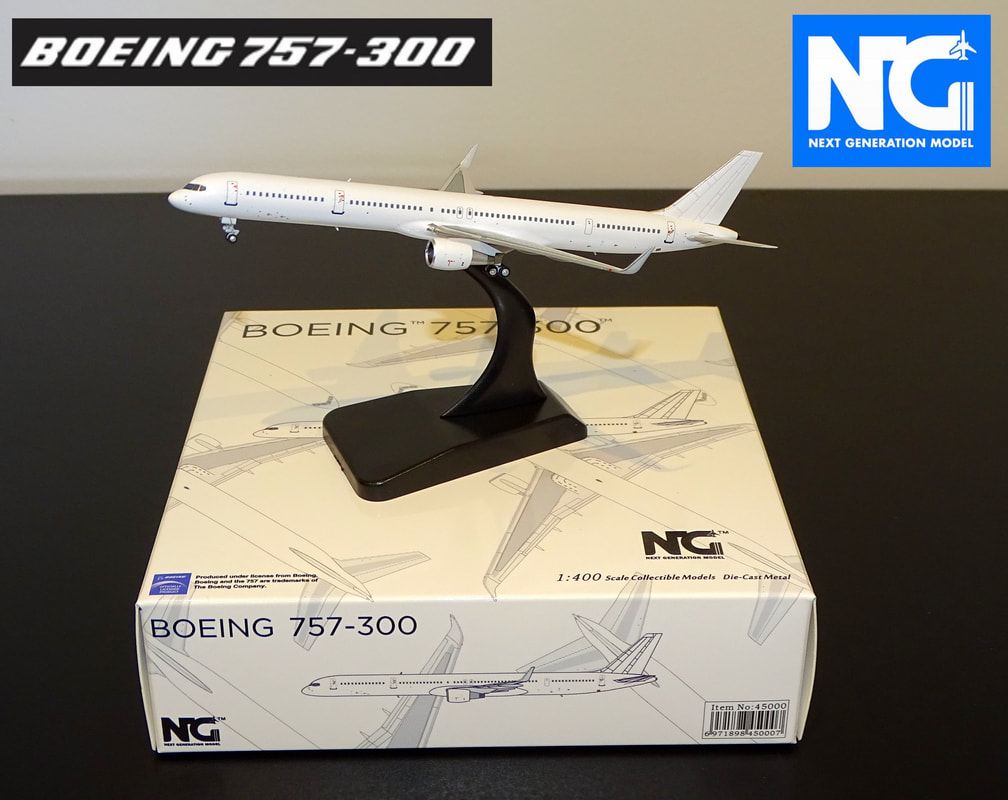Boeing 757-300 in 1:400 Scale |
|
Updated: April 2024
It wasn't until the 757 was a fairly mature airframe that Boeing finally considered stretching it. The resulting series 300 was aimed at the needs of existing 757 operating charter customers, desiring a higher capacity version utilising the 757's excellent range, and major US operators after an aircraft in the same category as the 767-200 but with better operating costs. Ultimately it was a cheap and simple stretch that filled a rather niche requirement, not a long-term programme that could breath new life into the 757 production line. Announced in September 1996 it flew less than two years later on August 2, 1998 and only garnered 55 orders. The last 757-300 was delivered to Continental Airlines on April 27, 2004. While hardly a success in terms of production the majority of the 55 examples built remain in service and most with their original operators indicating that the companies that did buy the type have been very happy with them.
B757-300 in 1:400 Scale
Considering the limited production run the number of moulds made for the type has been good. However, until the NG mould arrived, all the moulds dated from the early days of 400 scale, albeit one has been updated, so have their limitations. Two have been barely used. They are all also based on the manufacturer's 757-200 moulds so share most of their characteristics with those. As of May 2024 there have been 32 models made covering a decent selection of schemes. Production is as follows:
There is certainly plenty of potential for further releases and a surprising number of schemes worn. I've looked in detail at that over at the 757-300 wishlist, which can be found here:
The B757-300 In 1:1
Outwardly the series 300 is just a stretched series 200, albeit quite a substantial one. It is 7 metres longer than its sibling for a total length of 54.4m (178ft 7in). This makes it the longest narrowbody twinjet as it is still slightly shorter than the DC-8-61/63. It is also fitted with a retractable tailskid on the rear underside but this isn't obvious in 400 scale. As with the shorter 200 series the 300 can be fitted with blended winglets but none were delivered with them.
Engine options included the Pratt & Whitney PW2040, as shown by the below Northwest example, and the Rolls-Royce RB211-535E4 as worn by the Condor.
Model Moulds
Dragon Wings (2002)
It was Dragon who were first on the scene with a 757-300 but peculiarly they used the mould only twice for some reason. Their series 200 only got 9 uses too, which is odd because compared to some Dragon moulds they aren't particularly bad. Indeed, aside from some poor cockpit positioning and template the mould is surprisingly good. The nosegear is a little weak also but the large maingear doors of the 757 hide any issues with the maingear.
The mould accentuates some of the positives of Dragon moulds well. It has excellent wings and stabilisers with the former joining to the fuselage excellently with no obvious seam. As with most Dragon moulds the seam is only visible on the underside, which allows for a very realistic wing to fuselage fairing area. The fuselage shape is also nice, it's just a shame that the cockpit print is too large. The nose could be slightly better but overall it's a decent effort. With only two models ever made (Continental and Northwest) it is something of a missed opportunity.
Gemini Jets Mk1 (2003)
The Gemini 757-300 shares all the same features as the classic Gemini series 757-200 but being slightly later lacks the tail seam present on the original 757-200 mould. Much like the series 200 version it is a decent mould, certainly more than satisfactory for its era, with an overall decent fuselage and wing form. The biggest drawbacks of these early variants is the rather chunky static undercarriage and of course, being such an old mould, the seam line present at the wingroot. The seamline is quite discrete and small so isn't a major but it is inferior in this regard to the Dragon mould. This mould is available in both original wingtips and blended winglets variants.
This mould is far and away the most heavily used with a decent selection from Gemini , one from its production partner of the era, Phoenix, and a couple of rebadged Schuco releases for the European market. The mould continued in use in this form for 13 years, with the last release coming in 2016. Following that it was upgraded by Gemini's current production partner, JC Wings, with new undercarriage and aerials. In this form is continues in production - see the entry below.
Herpa (2004)
Herpa's 757-300 made it a trio of moulds for the type within three years, but, as is typical for Herpa, and in keeping with Dragon they have barely used the mould. As with the Dragon it has the benefit over the Gemini mould of being seamless at the wing. I've never seen it in person but like their series 200 it looks like a strong contender, albeit the rear fuselage is a little chunky. Only three models were ever made - a Northwest and a pair of Condors.
Gemini Jets Mk2 (2018)
Many of Gemini's older moulds have been updated in recent years, by their production partner JC Wings, with new rolling gear and aerials. Both the series 200 and 300 got the treatment in 2018. The changes have been a distinct improvement but aren't perfect. The nosegear door is a little too small (previously it was too large) but the nosegear leg is thin and detailed albeit the two forward pointing processes look a little too long. The maingear is also new and an improvement over the old style. The tyres are closer together and the maingear doors longer. The gear leg itself, only visible from the inside, is also more detailed and correctly forked.
Many of Gemini's older moulds have been updated in recent years, by their production partner JC Wings, with new rolling gear and aerials. Both the series 200 and 300 got the treatment in 2018. The changes have been a distinct improvement but aren't perfect. The nosegear door is a little too small (previously it was too large) but the nosegear leg is thin and detailed albeit the two forward pointing processes look a little too long. The maingear is also new and an improvement over the old style. The tyres are closer together and the maingear doors longer. The gear leg itself, only visible from the inside, is also more detailed and correctly forked.
Aerials have been added and the mould has been used a reasonable amount by Gemini since, with even a single JC release. Even so, it still has the old fuselage seam and as decent as it is would not be able to compete if NG joined the market with a stretched version of their excellent series 200 mould.
NG Models (2024)
It's been a long time coming considering that they have had an excellent 757-200 back in 2018, but NG has finally decided to enter the stretch 757 arena now with their new mould for the type. See the review of it here:
It's been a long time coming considering that they have had an excellent 757-200 back in 2018, but NG has finally decided to enter the stretch 757 arena now with their new mould for the type. See the review of it here:
